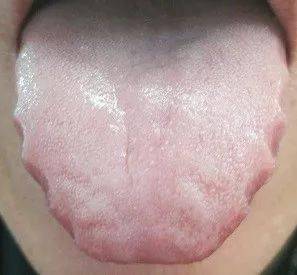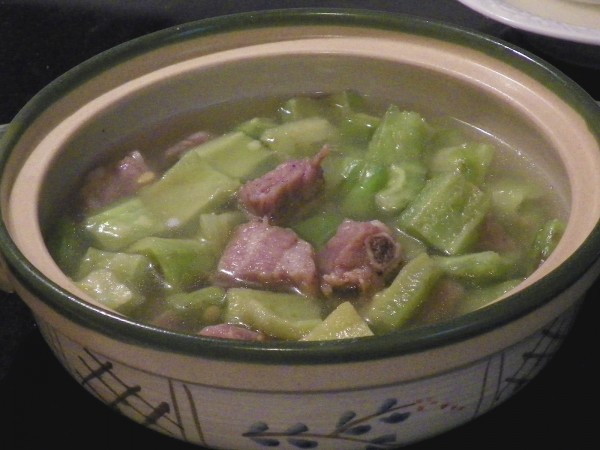Dampness is a concept in traditional Chinese medicine (TCM) that refers to a series of symptoms caused by the invasion of external damp pathogenic factors or the stagnation of internal water and dampness in the body.
Dampness can be classified into external dampness and internal dampness :
External dampness is mainly associated with factors such as humid weather, exposure to rain or water, and living in a damp environment.

Internal dampness on the other hand, is primarily related to improper diet and imbalances in the spleen and stomach.

Water constitutes a vital component of the human body, accounting for about 70% of body weight. Therefore, rapid changes in external climate or disruptions in the body’s regulation of fluid balance can easily lead to abnormal metabolism of bodily fluids, resulting in the manifestation of dampness. “Dampness” typically does not occur in isolation; when combined with cold, it becomes cold-dampness; with heat, it becomes damp-heat; and with wind, it becomes wind-dampness, and so on.
Reasons why the human body is heavy with dampness
1) Dietary Factors:

Consuming raw and cold foods, ice cream, or cooling fruits and vegetables in excess can stagnate the digestive and absorptive functions of the gastrointestinal tract. Therefore, it is not advisable to overconsume such foods. When cooking, it is best to add ingredients like onions and ginger to mitigate the cold and cooling nature of vegetables. Greasy, overly salty, excessively sweet, and rich foods are also challenging for digestion and absorption. They can lead to discomfort such as bloating and may disrupt the function of the spleen and stomach, affecting the metabolism of water and creating dampness.
2) Sleep Factors:

Sleep itself does not cause the occurrence of dampness. However, insufficient or poor-quality sleep may impact the body’s immune system and metabolic functions, increasing the risk of dampness. A weakened immune system makes it difficult for the body to resist the invasion of external dampness, making it more susceptible to its effects. Additionally, inadequate or poor-quality sleep can lead to disruptions in metabolic functions, hindering the normal elimination of bodily fluids and increasing the risk of dampness. Therefore, maintaining sufficient and high-quality sleep is crucial for preventing and treating dampness.
3) Environmental Factors:

Malaysia is a tropical rainforest country with high humidity and frequent rainfall. The air often contains a significant amount of moisture. Additionally, if individuals do not promptly dry themselves after getting caught in the rain, it may provide an opportunity for dampness to invade the body. Living in damp and poorly ventilated environments with insufficient sunlight can lead to high indoor humidity. Working regularly in damp and cold conditions can also contribute to the invasion of dampness into the body.
4) Lack of Exercise:

Prolonged lack of physical activity can affect the body’s metabolism and immune system, causing a slowdown in metabolic rates. This can result in the accumulation of damp and cold Qi in the body, leading to an excessive dampness problem. Moreover, insufficient exercise can weaken the immune system, making the body more susceptible to external dampness. Therefore, engaging in regular physical activity helps promote metabolism, expel dampness, and enhance the immune system, preventing the invasion of dampness.
5) Emotional Factors:

In today’s society, work and life pressures are increasingly severe. Long-term exposure to emotional stress can lead to functional imbalances in the body, affecting metabolism and fluid regulation. It also results in a weakened immune system, making the body more susceptible to external dampness. Maintaining good emotional and psychological well-being is beneficial for preventing the occurrence of dampness.
Manifestations of excessive dampness in the body
1) When dampness initially invades the body, it may manifest as a heavy sensation in the head, as if wrapped in a cloth. There may be accompanying symptoms such as mental fatigue, feeling sluggish throughout the day, and an inability to lift one’s spirits.

2) Excessive internal dampness can lead to a feeling of heaviness in the body, with limbs feeling burdened, slow movement, physical fatigue, and a general discomfort as if the body is carrying a heavy load.

3) If bowel movements are consistently unformed, it indicates the presence of dampness eroding the body. Stools may be sticky and difficult to clean off the toilet bowl, a characteristic feature of dampness due to its adhesive nature.

4) Thick and sticky tongue coating, along with teeth marks on the sides of the tongue, is a classic manifestation of dampness-related illnesses. Examining the tongue coating in the morning immediately upon waking up provides the most accurate assessment.

5) Excessive dampness in the body can lead to obesity, with the lower abdomen appearing enlarged, muscles becoming lax, and individuals displaying these features typically having a higher level of internal dampness.

6) Dampness affecting the spleen can lead to chest tightness, abdominal distension, poor appetite, reduced food intake, fatigue, lethargy, a tendency to feel drowsy, and an aversion to drinking water, disrupting normal life and work.
7) Invasion of dampness in the joints can result in rheumatic and arthritic conditions. Symptoms include joint pain, heaviness, and difficulty in joint movement, affecting the body’s circulation of qi and blood and the immune system.
Recommendations for Dampness-Expelling Medicinal Diets
1) Lotus Seed and Adzuki Bean Soup

Ingredients: 30g lotus seeds, 60g adzuki beans, 30g coix seeds, 10g poria cocos, 20g euryale, and 30g Chinese yam.
Instructions: Wash all the ingredients, add an appropriate amount of water, bring to a boil over high heat, then simmer over low heat for 1 hour before consuming.
Benefits: Lotus seeds clear heat and eliminate dampness, adzuki beans and coix seeds promote diuresis and eliminate dampness, poria cocos and euryale invigorate the spleen and eliminate dampness, while Chinese yam nourishes the spleen, lungs, and kidneys. Cooking these ingredients together as a soup achieves the effect of expelling dampness.
2) Bitter Melon and Pork Rib Soup

Ingredients: Bitter melon (about 400g), pork ribs (about 600g), 100g soybeans, salt and seasonings to taste, and 2500ml water.
Instructions: Wash all the ingredients thoroughly. Remove the seeds from the bitter melon and cut it into pieces. Peel the soybeans, and cut the pork ribs into pieces. Blanch the pork ribs in hot water to remove any unpleasant odour. Put all the ingredients in a pot, add an appropriate amount of water, bring to a boil over high heat, then simmer over low heat for 2 hours. Add a little salt before serving.
Benefits: Bitter melon contains a substance that can reduce fat, making it suitable for weight loss. In addition to expelling dampness, it also has heat-clearing, detoxifying, and beautifying effects, making it a suitable soup for the summer.
3) Bamboo Shoot Soup

Ingredients: 300g bamboo shoots, 20g dried tremella, 1 egg, salt to taste, and 1000ml water.
Instructions: Wash the bamboo shoots, soak the dried tremella in water, beat the egg into a bowl, bring the water to a boil in a pot, pour in the egg mixture, add bamboo shoots and tremella, simmer over low heat for five minutes, and season with salt.
Benefits: Bamboo shoots can expel dampness and promote diuresis, making them an excellent food for eliminating abdominal fat. Tremella also has a beautifying effect.
此文章还有以下语言版本:
![]() 简体中文 (Chinese (Simplified))
简体中文 (Chinese (Simplified)) ![]() Melayu (Malay)
Melayu (Malay)



